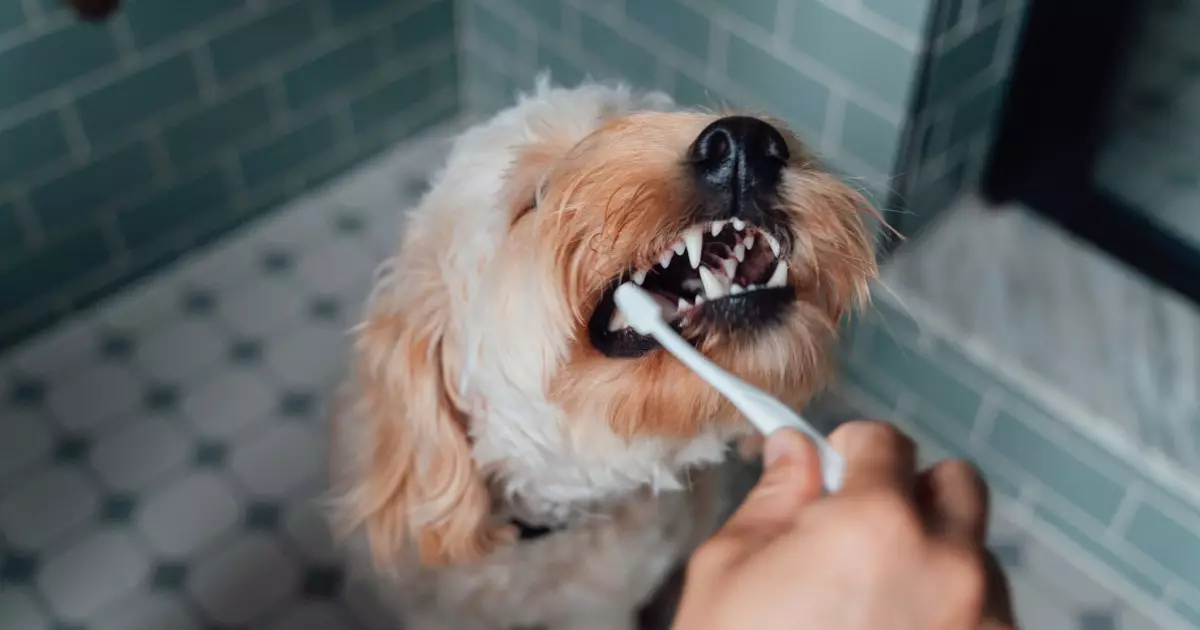Maintaining proper dental care for dogs is crucial for their overall well-being, yet many pet owners underestimate its importance. Statistics indicate that approximately two-thirds of pet owners do not follow the dental care recommendations provided by their veterinarians. This negligence has dire consequences; data suggests that by the age of three, around 80% of dogs exhibit signs of oral disease. Given the interconnectedness of dental health with other bodily systems—such as the lungs, kidneys, and heart—it is vital to prioritize dental hygiene from a young age. This article delves into the significance of dental care for your canine companion, the potential risks of neglect, and effective practices for maintaining their oral health.
Periodontal disease starts as a seemingly innocuous condition—plaque buildup. When plaque, a sticky film consisting of bacteria, accumulates on the teeth, it can lead to various complications if not addressed promptly. The initial sign many pet owners notice is persistent bad breath, often described as “doggy breath.” If you encounter this issue, it should serve as a red flag to seek a dental examination from your veterinarian. In its early stages, plaque is relatively easy to remove via regular brushing or through the dog’s natural chewing habits with durable toys or specially formulated food.
However, if left untreated, plaque can harden into tartar, a hardened deposit that adheres firmly to the teeth. The presence of tartar sets the stage for gingivitis, a condition characterized by red, swollen gums that are prone to bleeding. Once a dog progresses to this stage, mere brushing will no longer suffice to reverse the damage; professional cleaning becomes essential. If periodontal disease remains unmonitored, the consequences can become severe, including tooth loss, painful infections, and systemic complications affecting vital organs.
Starting Dental Care Early: A Preventive Approach
The journey toward optimal dental health should begin early in a dog’s life. Responsible pet owners should schedule an initial dental examination with their veterinarian while their dog is still a puppy. During this early stage, veterinarians assess the presence of issues such as missing teeth or swelling of the gums, which can indicate underlying problems. Consistent veterinary appointments are key as dogs mature, with regular cleanings and examinations crucial for detecting developing issues.
As dogs enter their elder years, dental examinations become even more critical. By this point, vets will scrutinize for plaque and tartar accumulation, gums’ health, and signs of more serious conditions such as tumors or advanced periodontal disease. Small dogs might require professional cleaning starting at one year of age, whereas larger breeds may necessitate this service at two years old. With age, the frequency of veterinary visits for dental maintenance should increase to ensure ongoing oral health.
Understanding the Veterinary Dental Care Process
Veterinary dental care involves a comprehensive approach that may include several steps performed under anesthesia. Prior to any dental procedures, your veterinarian will conduct a pre-anesthetic examination to assess your dog’s overall health, including definitive testing such as blood work or X-rays. This step is vital in determining whether your dog can safely undergo anesthesia, thereby mitigating potential risks associated with the procedure.
During the dental procedure itself, several critical measures are taken: monitoring the pet’s vital signs—like heart rate and respiration—is essential to ensure their safety throughout the process. Dental X-rays may also be employed to uncover conditions not readily visible in a visual inspection, potentially revealing issues requiring immediate attention, such as the need to extract infected teeth.
Once all assessments are complete, the actual cleaning involves scaling and polishing the teeth to eliminate plaque and tartar. Vets may finish by applying a protective substance, similar to fluoride treatments in human dentistry, which helps reduce future plaque buildup while strengthening the teeth.
While routine in-veterinary cleanings are indispensable, a comprehensive dental care strategy extends into the home. Pet owners should aim to brush their dogs’ teeth consistently, establishing a baseline for dental hygiene. Specialty canine toothbrushes and paste are readily available in pet stores to assist owners in this endeavor, promoting healthier mouths and preventing dental issues from arising in the first place.
A few simple steps can significantly enhance your dog’s dental health, ultimately leading to a happier and longer life. Responsible dental management can potentially add years to your pet’s lifespan; studies suggest a correlation between regular dental care and longevity. Engage with your veterinarian to discuss a personalized dental care plan that aligns with your dog’s specific needs. Remember, investing in your pet’s dental health is an investment in their overall well-being.

